Rhinopomastus

Common Scimitarbill by Yathin S. Krishnappa, CC BY-SA 3.0
Etymology: Covered Nostrils
Classification: Dinosauromorpha, Dinosauriformes, Dracohors, Dinosauria, Saurischia, Eusaurischia, Theropoda, Neotheropoda, Averostra, Tetanurae, Orionides, Avetheropoda, Coelurosauria, Tyrannoraptora, Maniraptoromorpha, Maniraptoriformes, Maniraptora, Pennaraptora, Paraves, Eumaniraptora, Averaptora, Avialae, Euavialae, Avebrevicauda, Pygostaylia, Ornithothoraces, Euornithes, Ornithuromorpha, Ornithurae, Neornithes, Neognathae, Neoaves, Inopinaves, Telluraves, Afroaves, Coraciimorphae, Cavitaves, Eucavitaves, Picocoraciae, Bucerotiformes, Upupi, Phoeniculidae
Referred Species: R. aterrimus (Black Scimitarbill), R. cyanomelas (Common Scimitarbill), R. minor (Abyssinian Scimitarbill), R. castaneiceps (Forest Scimitarbill)
Status: Extant, Least Concern
Time and Place: Within the last 10,000 years, in the Holocene of the Quaternary

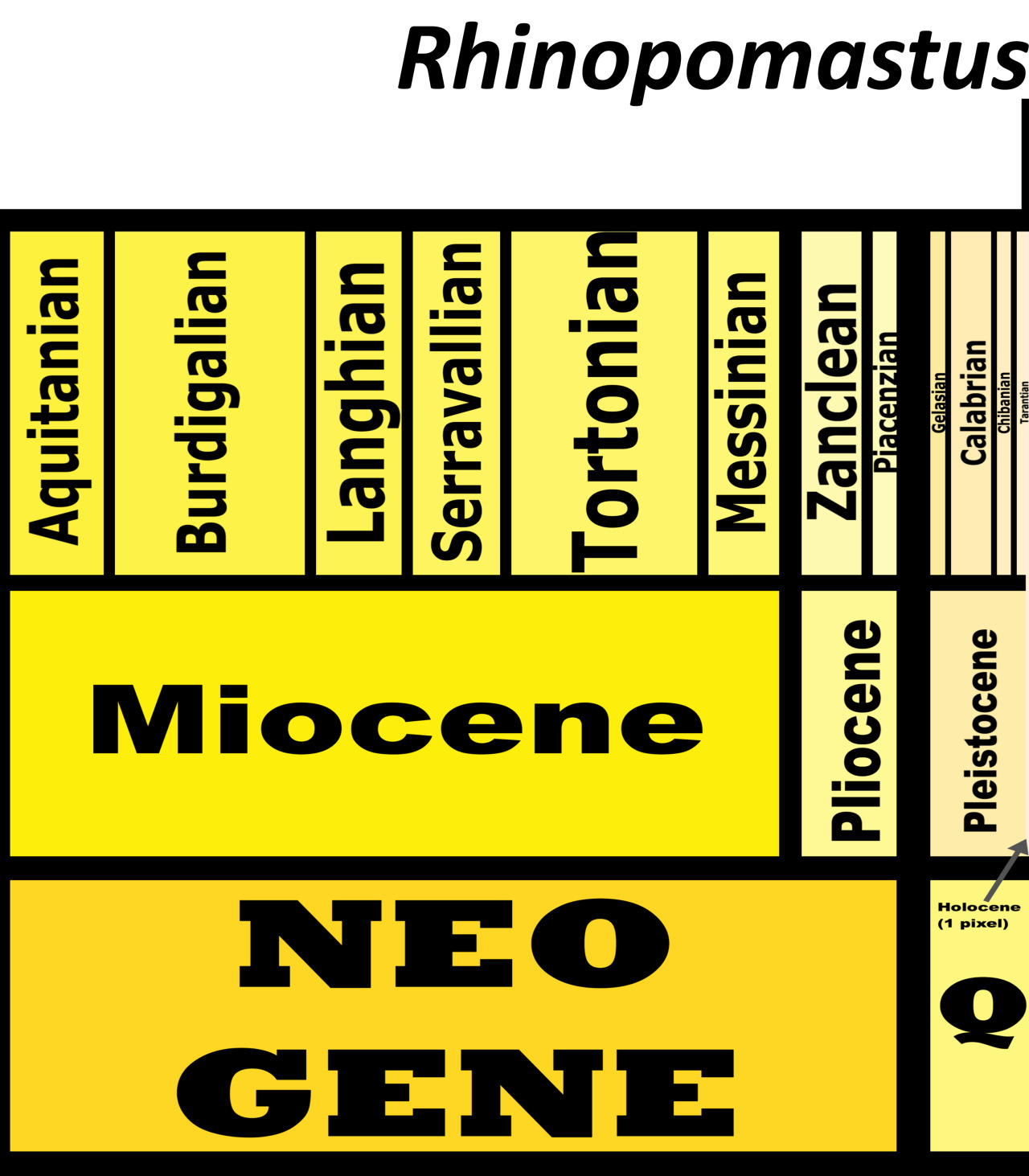
Rhinopomastus is known primarily from sub-Saharan Africa, primarily in dry habitats
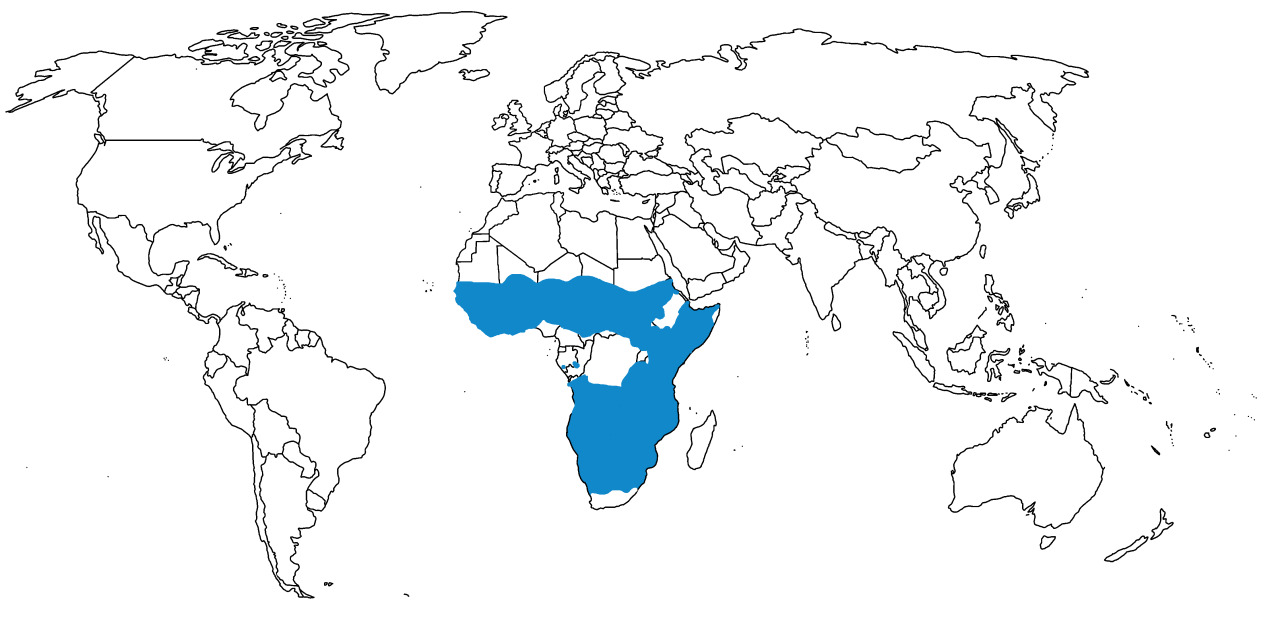
Physical Description: Rhinopomastus, aka the Scimitarbills, are a group of small tree dwelling birds closely related to the Woodhoopoes, and are most distinguished by their strongly curved, scimitar-like bills. These are black colored birds, with shiny feathers, though the Forest Scimitarbill is more orange and green than black. The females in general look similar to the males, except the female of the Abyssinian Scimitarbill, which has a light colored belly. They range in size from 21 to 30 centimeters long, about the same length as an American Robin. Their beaks are somewhat lighter than their bodies, and they have squat bodies with extremely long tails. The Abyssinian Scimitarbill, however, has a distinctive bright orange bill.
Diet: These birds primarily feed on insects, but they do also supplement their diet with branches and leaves from time to time, as well as fruits and flowers.
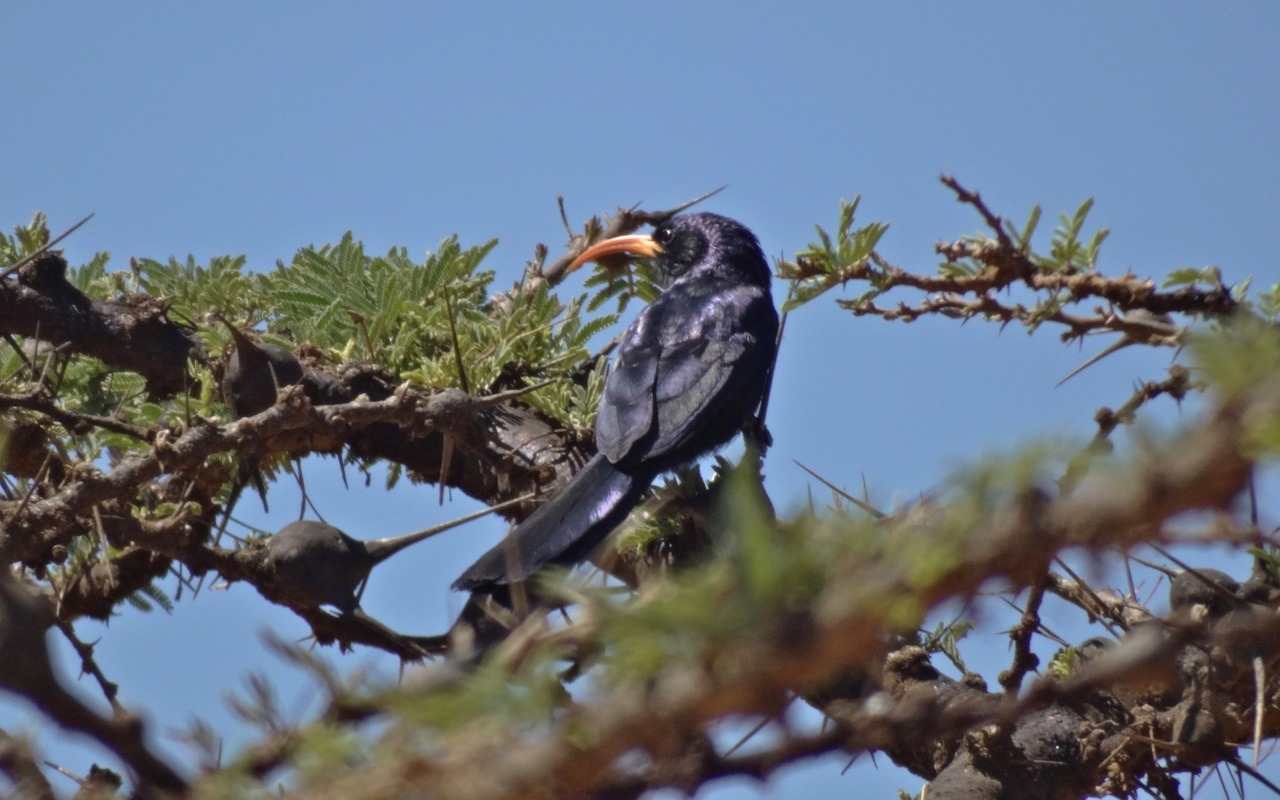
Abyssinian Scimitarbill by ChriKo, CC BY-SA 4.0
Behavior: These birds will forage together in small family groups or mated pairs, though they do occasionally join mixed species foraging groups. They will often probe holes in trees with their long bills, or dig into other similar hiding places for their favorite insects. They spend most of their time with tree trunks and on the branches of trees, where they probe under the bark for their food. In their family groups, they tend to follow one after the other in a line behind the unofficial leader of the family.
These birds make repeated, harsh, chattering calls, such as kee-kee-kee or ka-ka-ka over and over again. They also have been known to whistle or make softer chatters all in unison together in their habitat.
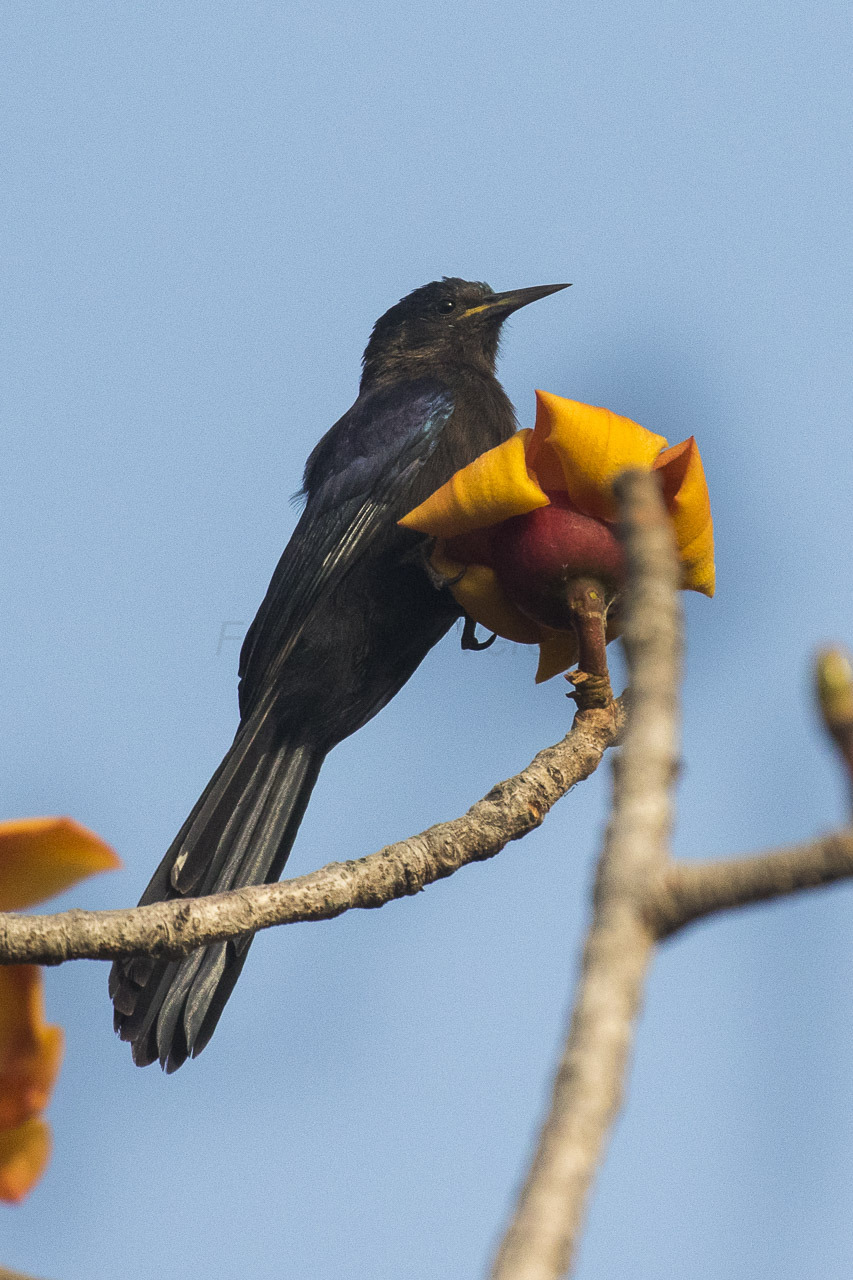
Black Scimitarbill By Francesco Veronesi, CC BY-SA 2.0
These are monogamous birds, which mate and take care of their young in solitary pairs without helpers. They will build nests in tree cavities, some very low to the ground while others are very high off of the ground. THe males will bring food to the females as the female incubates the eggs for about two weeks, at which point the female remains with the nest while the male brings food to both the young and the female. Eventually, both parents will forage for food before bringing it back to the young. After three weeks, the young can leave the nest, but they are still dependent on the parents and they all travel around together in a group. They are extremely acrobatic birds, moving around from tree to tree very excitedly and energetically.
While these birds do move around based on food availability, especially from higher to lower elevations as the breeding seasons transition, they are not on the whole migratory. They do sometimes follow patterns of the dry season.
Ecosystem: Different species live in different habitats based on their specific niche. While the Forest Scimitarbill is specific to open-canopy, primary forest as well as old growth forest, the Black Scimitarbill completely avoids the forest and stays in the savannah and dry brush instead. The Common Scimitarbill will live anywhere, but it is rare in true forest and moist woodland. And, finally, the Abyssinian Scimitarbill will live in light woodland and across the thorn-scrub. They’re all associated with trees, given their diet and perching style.
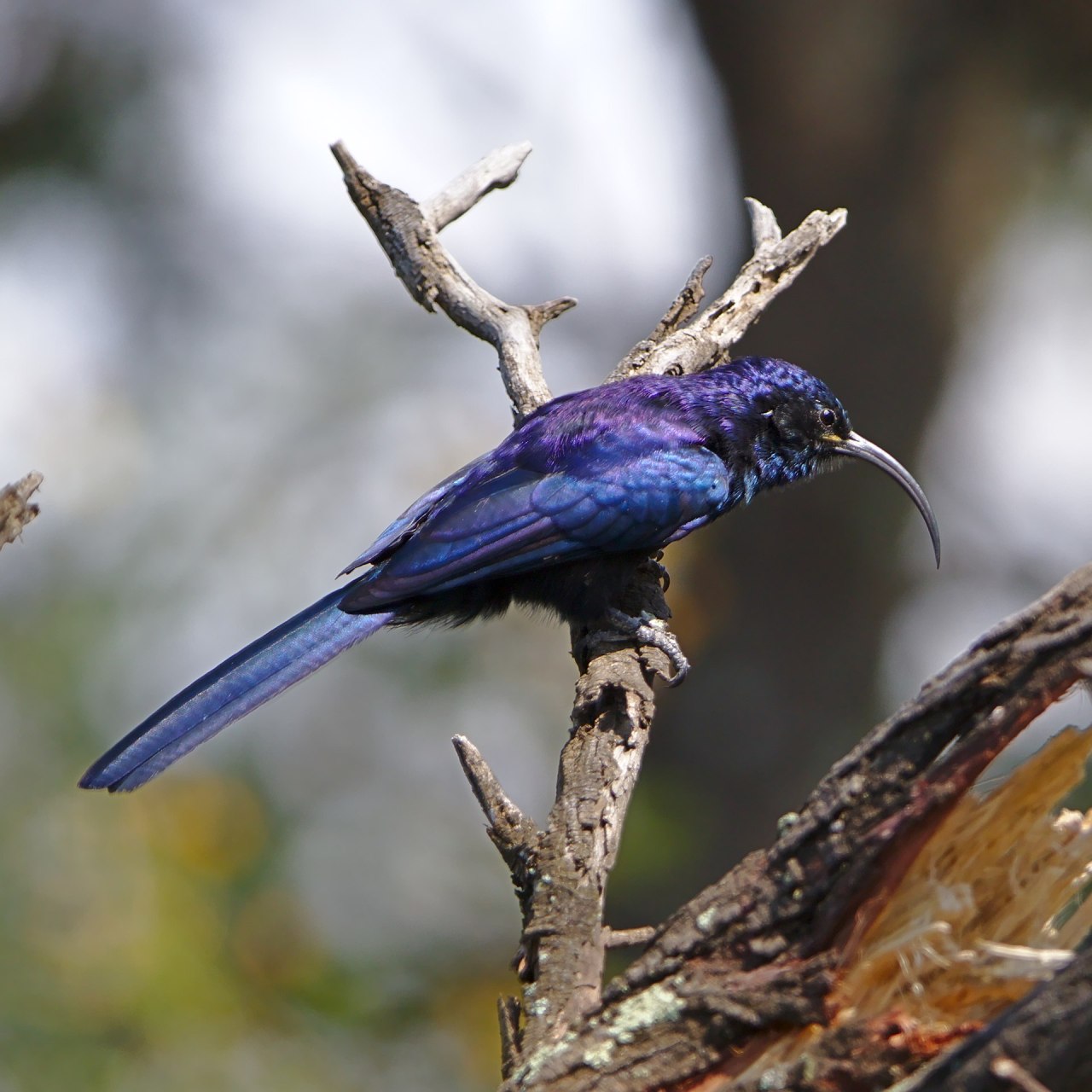
Common Scimitarbill by Derek Keats, CC BY 2.0
Other: These birds split from their closest relatives, the Woodhopoes, about ten million years ago, during the Miocene as the habitats of sub-saharan Africa dramatically changed.
Species Differences: The Black Scimitarbill has the least curved bill of all these birds, and it also lives in the driest habitats. The Forest Scimitarbill has the most vibrantly different colors, is the most associated with forests, and lives primarily along the West African coast. The Common Scimitarbill is the largest species, with the longest tail, and it is also the southernmost species. Finally, the Abyssinian Scimitarbill is the smallest species, with the bright red bill, and it is also the easternmost of the group.
~ By Meig Dickson
Sources under the cut
Jobling, J. A. 2010. The Helm Dictionary of Scientific Bird Names. Christopher Helm Publishing, A&C Black Publishers Ltd, London.
Ligon, D. & Kirwan, G.M. (2019). Abyssinian Scimitarbill (Rhinopomastus minor). In: del Hoyo, J., Elliott, A., Sargatal, J., Christie, D.A. & de Juana, E. (eds.). Handbook of the Birds of the World Alive. Lynx Edicions, Barcelona.
Ligon, D. & Kirwan, G.M. (2019). Black Scimitarbill (Rhinopomastus aterrimus). In: del Hoyo, J., Elliott, A., Sargatal, J., Christie, D.A. & de Juana, E. (eds.). Handbook of the Birds of the World Alive. Lynx Edicions, Barcelona.
Ligon, D. & Kirwan, G.M. (2019). Common Scimitarbill (Rhinopomastus cyanomelas). In: del Hoyo, J., Elliott, A., Sargatal, J., Christie, D.A. & de Juana, E. (eds.). Handbook of the Birds of the World Alive. Lynx Edicions, Barcelona.
Ligon, D. & Kirwan, G.M. (2019). Forest Scimitarbill (Rhinopomastus castaneiceps). In: del Hoyo, J., Elliott, A., Sargatal, J., Christie, D.A. & de Juana, E. (eds.). Handbook of the Birds of the World Alive. Lynx Edicions, Barcelona.

















